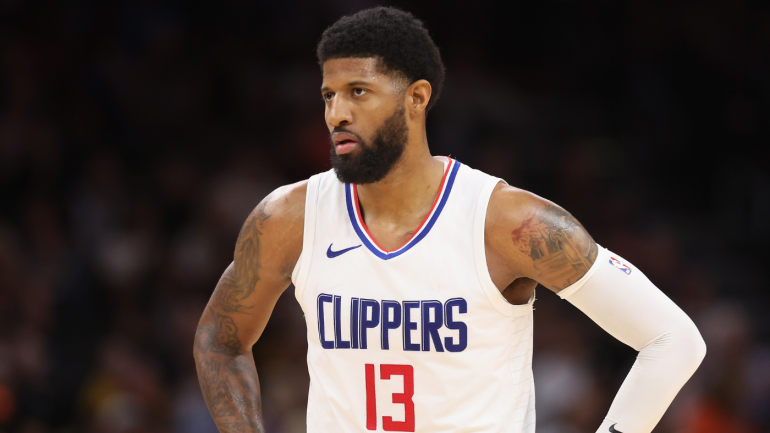Present position:NBA free agency is going to be defined by the new CBA: How second apron changes the game for roster >>Text
NBA free agency is going to be defined by the new CBA: How second apron changes the game for roster
Credit Card Protection Policies55Have read
About NBA free agency is going to be defined by the new CBA: How second apron changes the game for roster-...
NBA free agency is going to be defined by the new CBA: How second apron changes the game for roster-building
The looming new TV deal promises an influx of cash that could alter finances for a decade


NBA teams have a rich history of misinterpreting new rules. The 2011 collective bargaining agreement scared the Oklahoma City Thunder into trading away James Harden before he could become James Harden. They were afraid that the new luxury tax rules would make retaining him, Kevin Durant, Russell Westbrook and Serge Ibaka unsustainable. Five years later, when a new television deal led to a historic 34% cap spike, teams spent like there was no tomorrow under the assumption that the cap would keep growing forever. It didn't, and players like Joakim Noah, Timofey Mozgov, Chandler Parsons and Ian Mahinmi clogged cap sheets for years.
The summer of 2024 is set to be a somewhat rare convergence of these two phenomena. We're one year into a new CBA that has introduced an entirely new slate of rules into the equation. We're one year away from a new television contract kicking in that will reportedly pay the NBA $76 billion over 11 years and change the league's financial outlook for more than a decade to come. Teams typically struggle to appropriate handle onechange of this magnitude. Now the league is dealing with both.
Teams have predictably approached this chaos with caution. That's putting it mildly. Everybody except for Mat Ishbia seems terrified of the new second apron. And, well, that stance is justified. The second apron is the single most restrictive roster-building rule that the NBA has instituted since the invention of the salary cap. Here is a list of ways it limits teams that cross that line:
- No access to the taxpayer mid-level exception. These teams can only sign players for the minimum.
- No access to buyout players. If a player's salary at the beginning of a league year is above the non-taxpayer mid-level exception, he cannot sign with a second-apron team if he is waived during that season.
- No aggregating salaries in trades. Basically, you can't trade two $20 million players for a $40 million player, or a $40 million player and a $10 million player for two $25 million players.
- No flexibility in matching salaries through trades. Second-apron teams must send out as much or more money than they are taking back in any trade.
- No giving away cash in trades.
- No sign-and-trading your own players in exchange for other players.
- No trading first-round picks that are seven years away. These picks become "frozen," meaning they cannot be traded, and if a team spends more than two consecutive years above the second apron, those picks automatically move to the end of the first round.
- While this isn't specifically an apron rule, it's worth noting that the league's luxury tax rate model is changing in the 2025-26 season. In short, it will be cheaper to pay the tax if you're only slightly over the line, but far more expensive to pay it if you're far enough above the line to be considered a second-apron team. This is especially true if you are also a repeater tax team.
If all of that is too complicated, here's the short explanation: once you've crossed the second apron, you're probably stuck with the roster you have short of minor changes, and it's hard to imagine any team spending more than two straight years above the line and knocking their own future picks to the end of the first round.
Tags:
Reprinted :Welcome friends to share to the network, but please explain the source of the article“Credit Card Protection Policies”。http://aqntz.feilaokan.com/v95r743.html
Related articles
Monumental Sports announces plan to move Capitals, Wizards to Virginia
NBA free agency is going to be defined by the new CBA: How second apron changes the game for rosterMonumental Sports announces plan to move Capitals, Wizards to Virginia The Capitals and Wizar...
Read more
Yankees play
NBA free agency is going to be defined by the new CBA: How second apron changes the game for rosterYankees play-by-play announcer John Sterling to come out of retirement to call playoff games, per re...
Read more
Detroit Lions suggested as possible trade partner for star pass rusher
NBA free agency is going to be defined by the new CBA: How second apron changes the game for rosterDetroit Lions suggested as possible trade partner for star pass rusherMike Moraitis...
Read more
Top Article
- 'This Is Fine' Dog Creator Working on Video Game Starring the Beloved Meme
- Lakers hiring JJ Redick as head coach is just aimless activity disguised as forward progress
- F1 Azerbaijan Grand Prix radio station: How to listen to Formula 1 race, channel and live stream
- Packers Vs. Colts Week 2: Insider makes bold prediction with Jordan Love out
- 2023 WNBA Finals: Three key areas the Liberty can improve in Game 2 against the Aces
- WATCH: Ludacris throws shockingly accurate first pitch in 'Get Back' arms ahead of Braves game
Latest News
NCAA presents expanded basketball tournament models that could grow Big Dance to 72, 76 teams
NBA free agency: Pistons claim Paul Reed after center was waived by Sixers
JD Vance's German shepherd could continue history of White House pups
Who plays on Sunday Night Football tonight? Time, TV channel, schedule for NFL Week 2 game
PAX Aus 2024 Exhibitors Confirmed, Includes Steam for the First Time
LeBron James opts out of final year of Lakers contract, but expected to stay on new deal